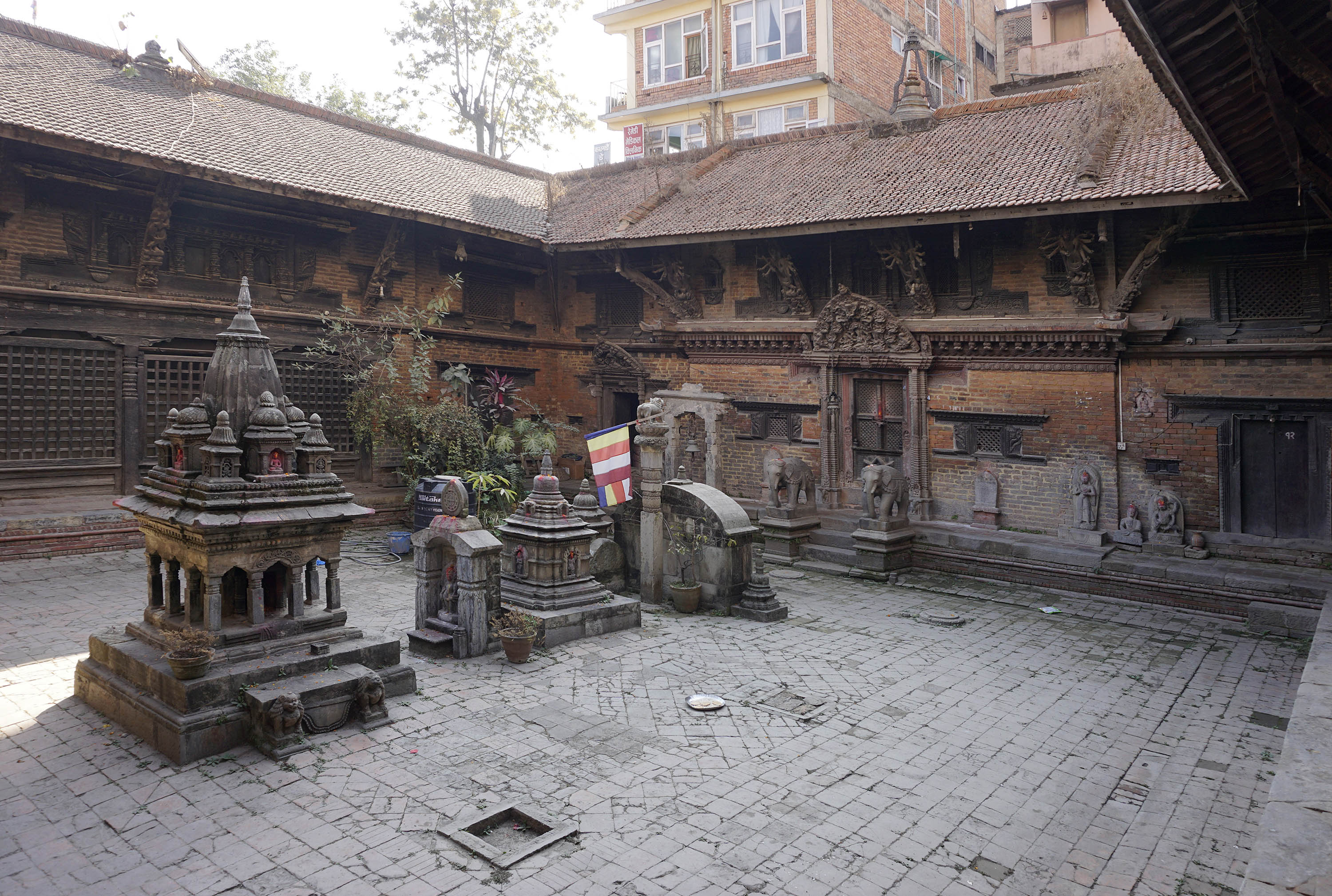Chusyā Bāhāḥ, Kathmandu

Chusyā Bāhāḥ, located in Jyāthā Ṭola, is one of the oldest bāhāḥs in Kathmandu, which retains its original architecture. The Bāhāḥ's initial construction date is a matter of debate. Karel Rijk van Kooij is of the opinion that the iconography and stylistic details of the roof brackets are concurrent with drawings found in 11th century manuscripts. Shantaram Balchandra Deo has dated the struts to the 14th century.
The earliest dated sources related to the Chusyā Bāhāḥ are two stone inscriptions issued during the reign of King Pratāpa Malla (r. 1641-74): a well-preserved inscription from 1668 CE and a damaged inscription, most probably issued before 1668 CE. The physical and paleographical features of these inscriptions suggest that they were issued by the same person within a period of a few years.
The well-preserved inscription records the consecration of Guṇākara Mahāvihāra (Chusyā Bāhāḥ) ‘guṇākara mahāvihāra pratiṣṭhā saṃpūrṇa yāṅana’ and the installation of Harāhara Lokeśvara sponsored by a person named Guṇajyoti (text: Guṇajoti) Vajrācārya together with his family members from Dhvākhā Bāhāḥ. The damaged inscription mentions the completion of the Bāhāḥ ‘thva vihara dayakā’.
A third inscription installed inside the sanctum of the bāhāḥ also by Guṇajyoti in 1649 CE records the renovation of a rest house (capāḥ) constructed by his father Jñānajyoti in honour of their clan deity, Maricī Devī. This indicates that there was a shrine or a pīṭha (abode) dedicated to Maricī Devī nearby. Chusyā Bāhāḥ is not mentioned in this inscription. If this expansive bāhāḥ had existed here during this time, it would probably have been mentioned in the inscription that records the family tree of Guṇajyoti and the renovation of the capāḥ. Thus, it is likely that the damaged inscription was issued after 1649 CE. We can then conclude that the bāhāḥ must have been constructed sometime after 1649 CE, and was consecrated (probably after its renovation) in 1668 CE. One could even argue that Guṇajyoti converted the capāḥ built by his father into a bāhāḥ and named it Guṇākara Mahāvihāra (Chusyā Bāhāḥ) after him. Chusyā Bāhāḥ's saṅgha members believe that Guṇajyoti constructed the bāhāḥ by spending his income generated from his trade in Tibet.
For more information about Chusyā Bāhāḥ, please visit DANAM.
